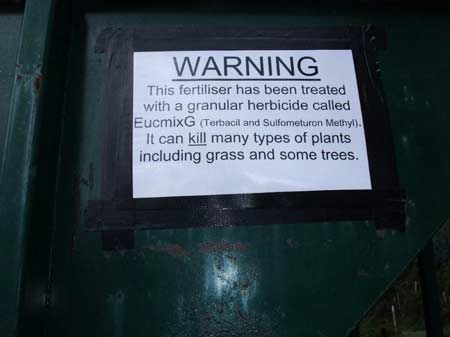

This sign was located on a large fertilser bin located off Track 32 in the College Creek catchment in September. It was also clear that fertiliser had been spread on recently logged land by Hancock. The issue was recently raised by ABC Radio in Gippsland after a press release from Friends of the Earth Melbourne.
ABC transcript 8 Oct 2009
Iím joined now by Owen Trumper who is the manager of Gippslandís, Hancock Victorian Plantations, good morning to you.
OT: Good morning Celine
Owen Trumper you would have heard Anthony Amisís comments there. Are you using Terbacil?
OT: Thankyou for the opportunity to clear up this misunderstanding. The fact of the matter is that we are not using terbacil or any herbicides up in the College Creek area and the misunderstanding comes from a generic sign that we have created for our fertiliser bins, which is due to our infrequent times which we do put chemicals in our fertiliser, and we do it for OH&S reasons, so for people who are handling the fertiliser, we have these generic signs that ensure that they check to make sure that we are in fact arenít using herbicides in that particular fertiliser batch and also we use it in case trespassers or passerbys tended to take some of the fertilisers for their home gardens and if that happened to have some of the herbicide at particular time it would have unfortunate results in their home.
So to clarify, what is in that bin?
OT: Oh its fertiliser.
Fertiliser to improve...
OT: Yes, fertiliser is part of our FSC certification. We have alot of strategies that we put down to minimise the use of herbicides and one of our strategies that we use is to try and fertilise our trees that we plant to give them a lift up above the competing vegetation, so itís in fact one of our strategies that we use to minimise herbicide. If I can make just a couple of other points. In College Creek and in particu;ar the cores and links area, we have a regeneration strategy which is targeted towards recreating the natural forest that was there and isnít for commercial plantations. So for example we plant at 300 stems per hectare for example, versus the 1000 stems per hectare that we would in a plantation and we are using a mix of three different species versus our commercial eucalyptus nitens that we use. So what that means in a herbicide sense is that the only time we use herbicide in the cores and links and in the college creek area is for the eradication of noxious species.
Do you use terbacil?
OT: We use a mix of herbicides, but the time that we would use any herbicides would for the eradication of blackberries and that occurs between November and March and that is part of the strategy for the Cores and Links is to eradicate noxious weeds and in particular Blackberry to create the rainforest reserve that people desire up there on the Cores and Links.
Sorry, Can you confidently say that there is no herbicide on the ground there at the moment, because according to Friends of the Earth they have seen something on the ground.
OT: Yes well they have seen fertiliser and they have seen the sign and I can certainly understand the confusion and it would have been useful if somebody could have given this a call and we could have explained the situation and we wouldnít have resulted in this kind of confusion.
But isnít it misleading then Owen Trumper to put that sign on that bin.
OT: Oh not at all. I mean under our OHS programs we have generic signs to put up to warn people of the possible risks and for those infrequent times that we may put chemicals in our fertiliser thatís the procedures and policies that we have developed.
OK so thereís no herbicide on the ground there at the moment.
OT: No.
There might he herbicide on the ground there between November, come the time that to get these blackberries?
OT: Thatís right and we directly spray those rather than a granular mix.
Is there any concern then that that spray will runoff into some of the creek areas and the rainforest areas if there is a huge dump of rain?
OT: No. Well. Just a couple of things Iíd say, is that the application of herbicide is heavily regulated and as Anthony mentioned there, that there are conditions with which you can apply those things and knowing when, forecast of weather and all of those types of things are taken into consideration when we apply the herbicide. So weíre not concerned, we donít believe that there is a risk of that translocation of the herbicide that we have used on the blackberries to outside of our sites.
Can you clarify this point that has been made by Friends of the Earth? They are worried that natural regeneration is deliberately being poisoned because they, do not want competition with the trees. They being Hancock plantations, do not want competition with the trees they have planted in this reserve. This could mean that the government or the company has plans to log these trees in the future.
OT: I can tell you that HVP plantations does not have any intention to harvest those areas in the future. The agreement we have with the State, is that once we harvest these areas, they are handed back to the state, so we wouldnít have any opportunity to harvest those trees in the future anyway. And as I mentioned earlier, the regeneration standards that we have are roughly 300 stems per hectare which is clearly not a commercial or a plantation type of stocking, at any rate. So I think that people can be absolutely comfortable that there is absolutely no plans of harvesting of those trees in the future.
Has Hancock Victorian Plantations had issues with herbicide runoff before?
OT: Not to my knowledge. Iíve been here for five years and certainly am not aware of any herbicide runoff issues that weíve had in the previous five years.
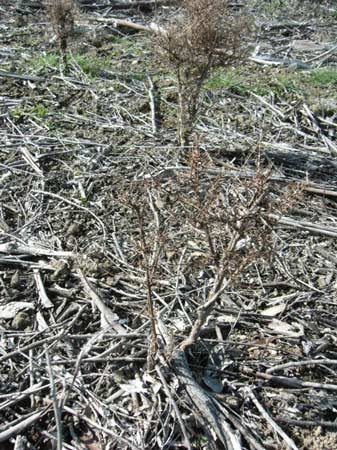
October 2009: Strzelecki Ranges/Jack River Catchment: Recent spraying to kill regeneration off Dubois Track.
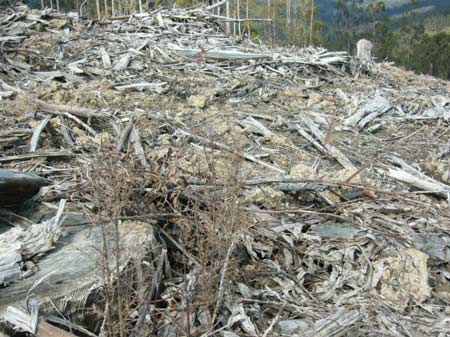
October 2009: Strzelecki Ranges/Jack River Catchment: Recent spraying to kill regeneration off Dubois Track.
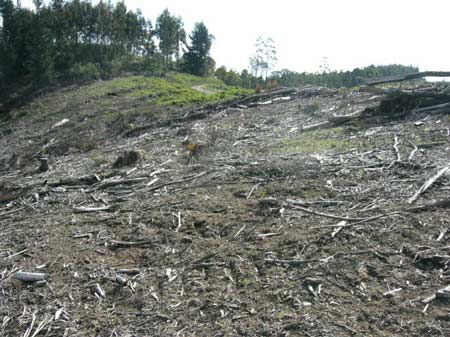
October 2009: Strzelecki Ranges/Jack River Catchment - Dubois Track. Herbicides kill native regeneration.
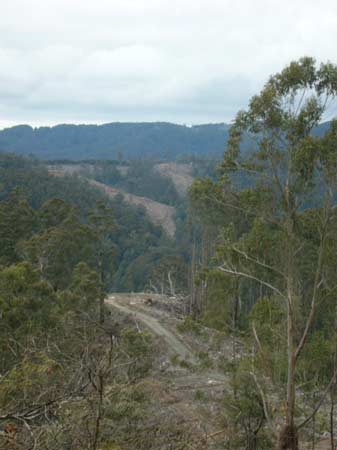
October 2009: Strzelecki Ranges/College Creek Catchment: Recent logging off Track 32 and Linkletters Rd (in distance) in national site of conservation significance.
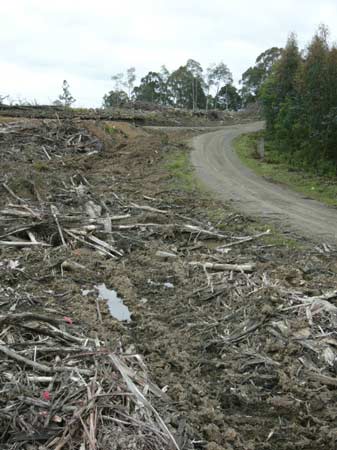
October 2009: Strzelecki Ranges/College Creek Catchment: Recent logging and tree planting in Crown Road Reserve off Track 32. Seedlings are surrounded by pink plastic tree guards as seen in this image.
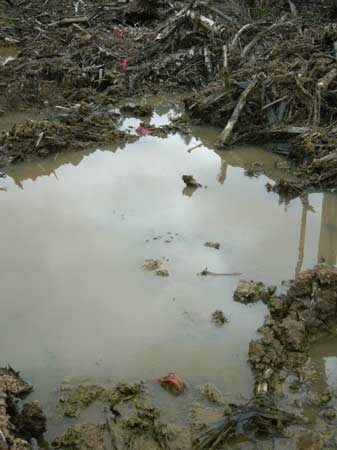
October 2009: Strzelecki Ranges/College Creek Catchment: Recent logging and tree planting in Crown Road Reserve off Track 32.

October 2009: Strzelecki Ranges/College Creek Catchment: Recent signs put up on Grand Ridge Road alerting tourists that the Strzelecki's are being logged to death. These signs must have been under someone's desk for the past 10 years as they were last used widely as an anti-conservationist ruse in the early 1990's.
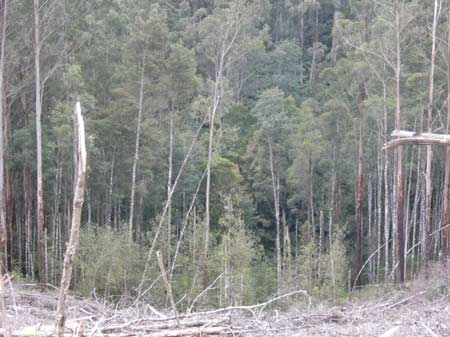
October 2009: Strzelecki Ranges/College Creek Catchment: Gutting of cool temperate rainforest buffers by Hancock.

October 2009: Strzelecki Ranges/College Creek Catchment
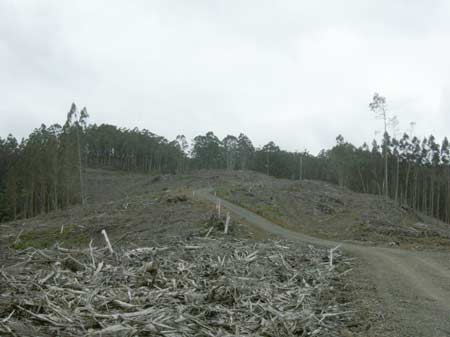
October 2009: Strzelecki Ranges/College Creek Catchment: Obvious signs of stifled renegeration at this site too. Logging commenced at this location in March 2009. Eight months later very little regen, why?
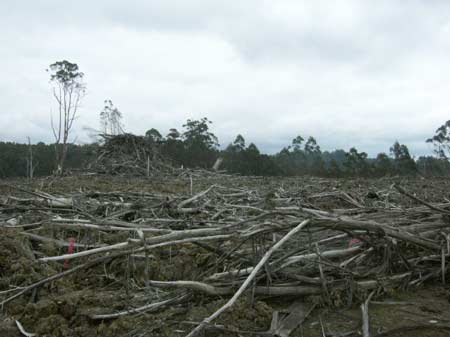
October 2009: Strzelecki Ranges/College Creek Catchment. Replanting after logging rainforest reserve.
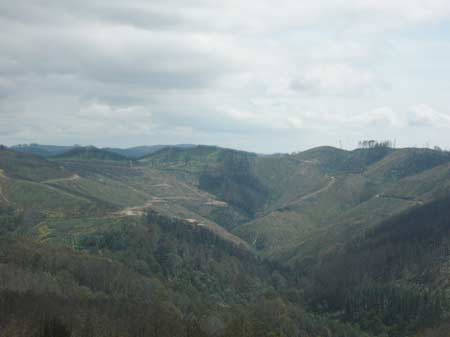
October 2009: Strzelecki Ranges/Flynns Creek Catchment: Recent logging in this extensive pine plantation.
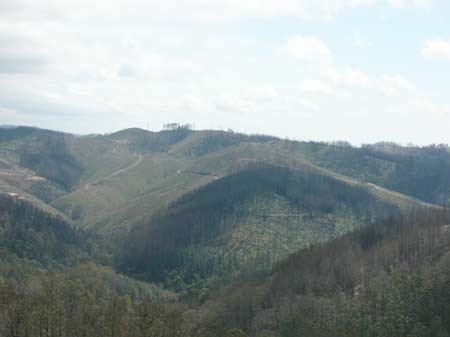
October 2009: Strzelecki Ranges/Flynns Creek Catchment: Scars of February 2009 bushfires still evident.
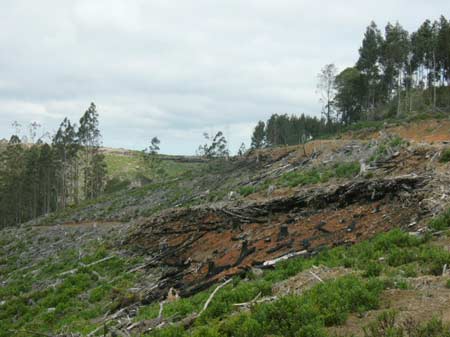
October 2009: Strzelecki Ranges/Jack River Catchment - Dubois Track. Hancock has been busy burning timber pile in Cores and Links Rainforest Reserve.
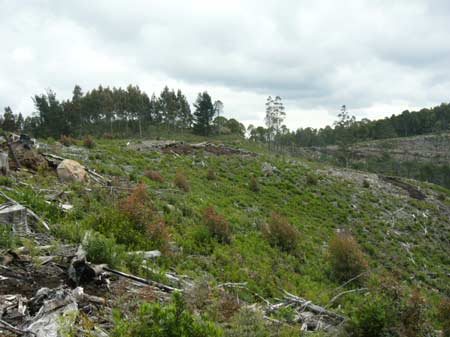
October 2009: Strzelecki Ranges/Jack River Catchment - Dubois Track. Natural regeneration occurring some 18 months after area was logged by Hancock. Plenty of E.viminalis was wiped out by Hancock at this site.
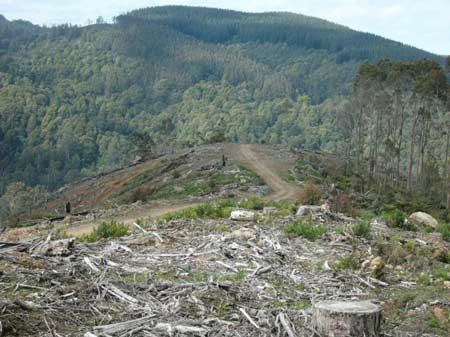
October 2009: Strzelecki Ranges/Jack River Catchment - Dubois Track, near recent spraying of regeneration, most likely with Eucmix G granules.
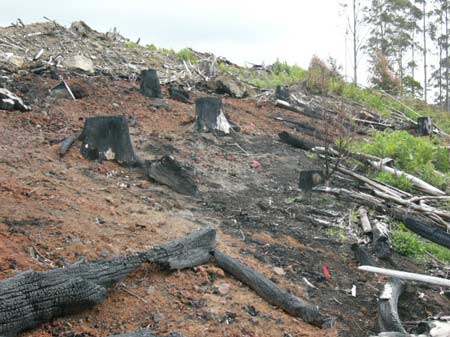
October 2009: Strzelecki Ranges/Jack River Catchment - Dubois Track. Another torched log dump, with recent replantings.
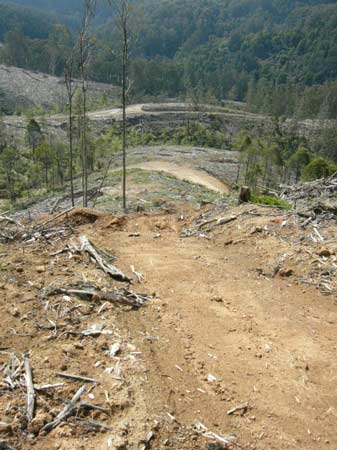
October 2009: Strzelecki Ranges/Jack River Catchment - Dubois Track. Obvious erosion hotspot in rainforest reserve.
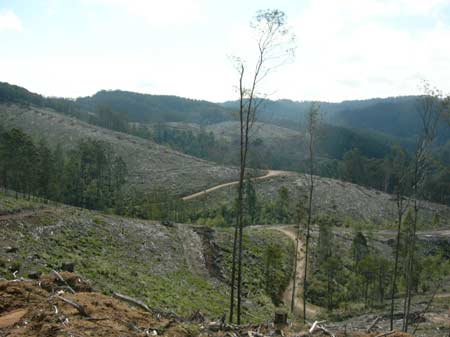
October 2009: Strzelecki Ranges/Jack River Catchment - Dubois Track. View looking north west into headwaters of Jack River. Cores and Links Rainforest Reserve.
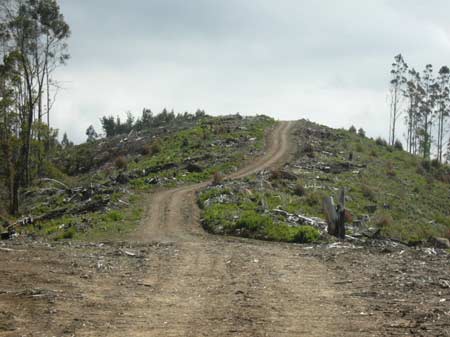
October 2009: Strzelecki Ranges/Jack River Catchment - Dubois Track. Native forest was logged at this site 17-18 months previously. Natural regeneration occurring.

October 2009: Strzelecki Ranges/Jack River Catchment - Dubois Track. Natural regeneration inside rainforest reserve.
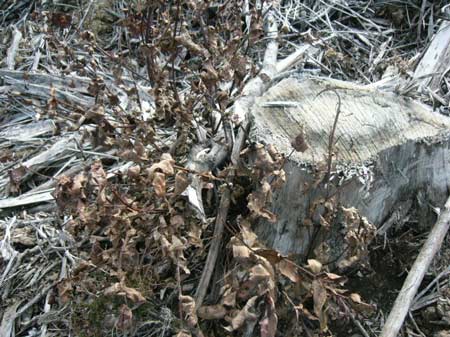
October 2009: Strzelecki Ranges/Jack River Catchment - Dubois Track. Recently poisoned regeneration. Why?
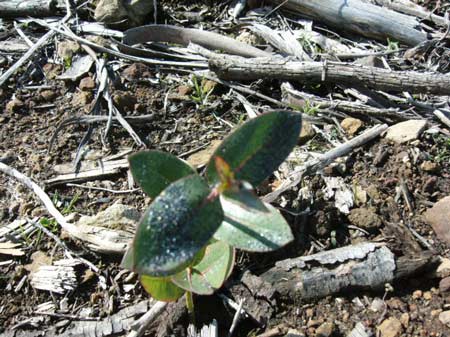
October 2009: Strzelecki Ranges/Jack River Catchment - Dubois Track. One of Hancock's recent plantings, coated with metallic substance to make it unpalatable to browsing wallabies.

October 2009: Strzelecki Ranges/Jack River Catchment. Almost all of the forest, located in the Cores and Links Rainforest Reserve, in this photograph will soon by logged by Hancock.
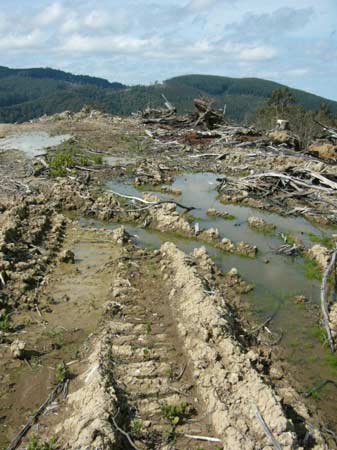
October 2009: Strzelecki Ranges/Jack River Catchment - FSC certified roading in rainforest reserve at Dubois Track.

October 2009: Strzelecki Ranges/Jack River Catchment - Kelly Track. Better regeneration near road than in coupe itself. Cores and Links Rainforest Reserve.
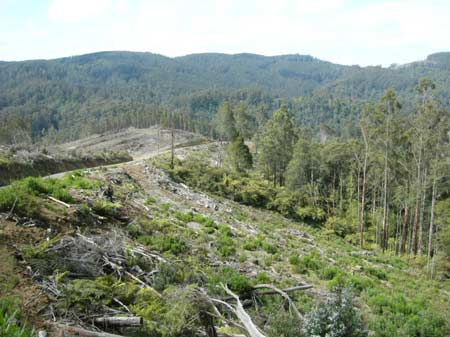
October 2009: Strzelecki Ranges/Jack River Catchment - Kelly Track. This site was logged in May 2008. Eighteen months later regeneration is slowly occurring.
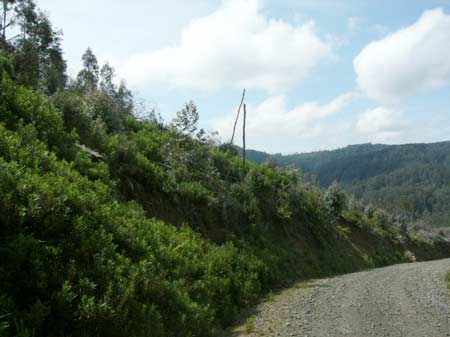
October 2009: Strzelecki Ranges/Jack River Catchment - Kelly Track. Eighteen months after logging native forest at this location, natural regeneration is slowly occurring.
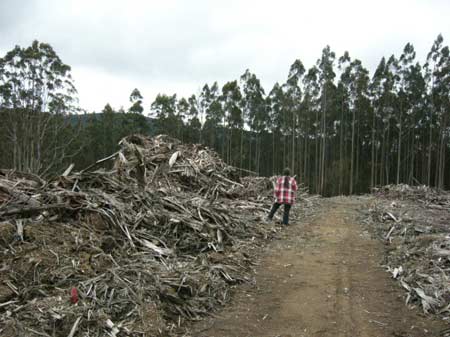
October 2009: Strzelecki Ranges/Jack River Catchment - Kelly Track. Piles of slash across log coupe. What will grow through this?
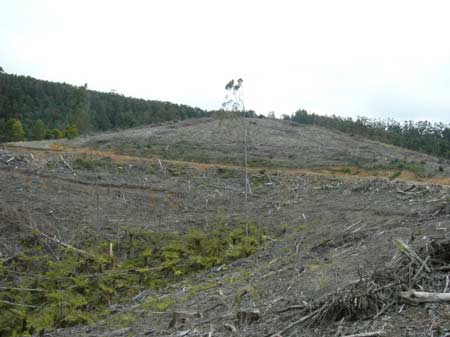
October 2009: Strzelecki Ranges/Jack River Catchment - Kelly Track. More herbicides used here? One year post logging and almost no signs of regeneration.

October 2009: Strzelecki Ranges/Jack River Catchment - Kelly Track. Area in foreground logged October 2008. Almost no regeneration. Area in background logged a few months earlier and regeneration starting to occur.
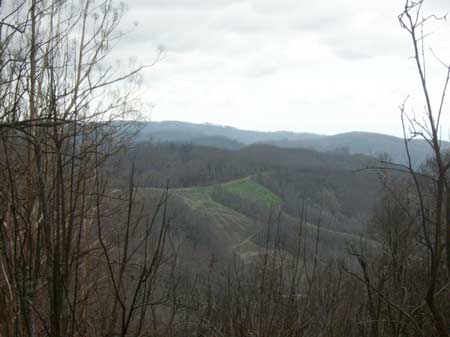
October 2009: Strzelecki Ranges/Traralgon Creek Catchment: Ryegrass growing in plantation recently logged by Hancock. Shortly after the recent bushfires, Hancock commenced a campaign to aerially apply rye grass over thousands of hectares of the northern Strzeleckis.
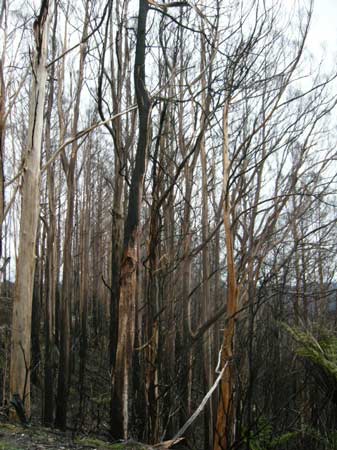
October 2009: Strzelecki Ranges/Traralgon Creek Catchment: Dead Mt Ash off Grand Ridge Road near Balook.

October 2009: Strzelecki Ranges/Antonio Creek catchment. Recent logging of pine plantations. Note buffer on drainage line.

October 2009: Strzelecki Ranges/Antonio Creek Catchment. Gavan McFadzean reserve is the tiny slither of dead and dieing trees in this gully. The green is actually natural regeneration inside pine plantation. This regrowth will most likely be poisoned by aerial application of Hexazinone in the near future.